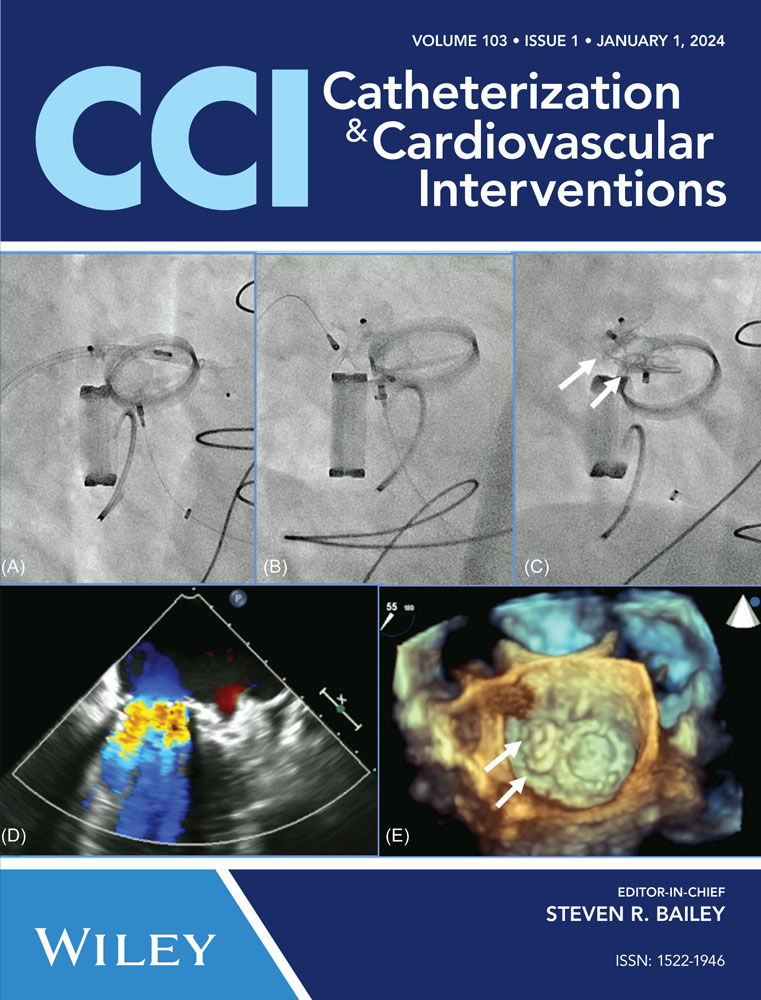Difference between antegrade and retrograde orbital atherectomy system debulking using an artificial pulsatile heart model
Abstract
Background
Debulking devices are necessary to treat severe calcified lesions. OAS has a unique characteristic that the burr moves forward and backward. There are few studies reporting the differences of ablation style between only-antegrade and only-retrograde OAS.
Aims
The aim of this study was to evaluate the difference of ablation style between only-antegrade and only-retrograde orbital atherectomy system (OAS) using an artificial pulsatile heart model (HEARTROID system®) and optical coherence tomography (OCT).
Methods
The calcified lesion model was inserted into the mid of left anterior descending in the HEARTROID®. Only-antegrade and only-retrograde ablation of OAS were conducted for each five lesions. Pre-OCT, OCT after low speed debulking and OCT after high speed debulking were conducted. The width and the depth of debulked area, the debulked area and the direction of debulked area were investigated.
Results
In all of 210 cross-sections, 91 debulked cross sections were chosen for analysis. Only-antegrade group had 47 debulked cross-sections, and only-retrograde group 44 cross-sections. In the evaluation of OCT after high speed debulking, the debulked area (0.76 mm2 [0.58−0.91] vs. 0.53 mm2 [0.36−0.68], p < 0.001) and the depth of debulked area (0.76 mm [0.58−0.91] vs. 0.53 mm [0.36−0.68], p < 0.001) were significantly higher in only-antegrade group compared to only-retrograde group. The debulked bias and the width of debulked area are not significantly different between the two groups.
Conclusions
Compared to only-retrograde debulking, only-antegrade debulking acquired larger debulked area because of larger cutting depth, although the debulked bias and the width of debulked area were comparable between the two groups.
CONFLICT OF INTEREST STATEMENT
The authors declare that there is no conflict of interest.
Open Research
DATA AVAILABILITY STATEMENT
The data that support the findings of this study are available from the corresponding author upon reasonable request.




